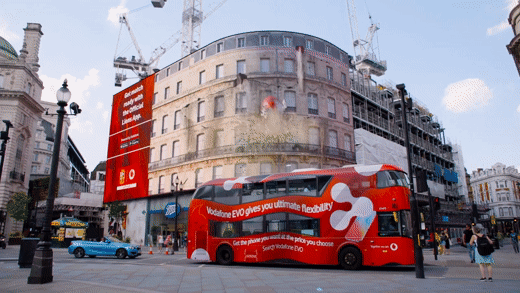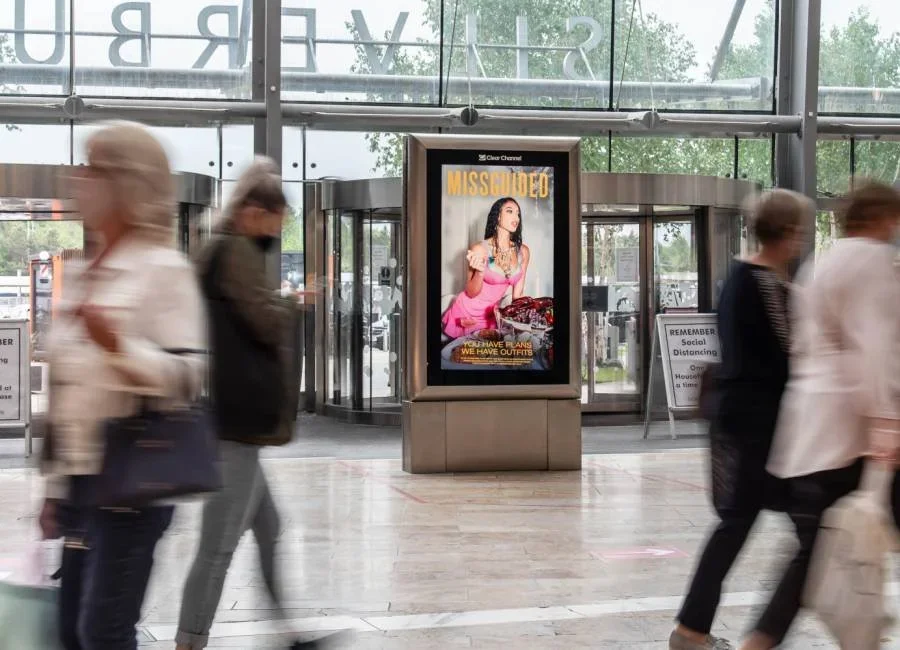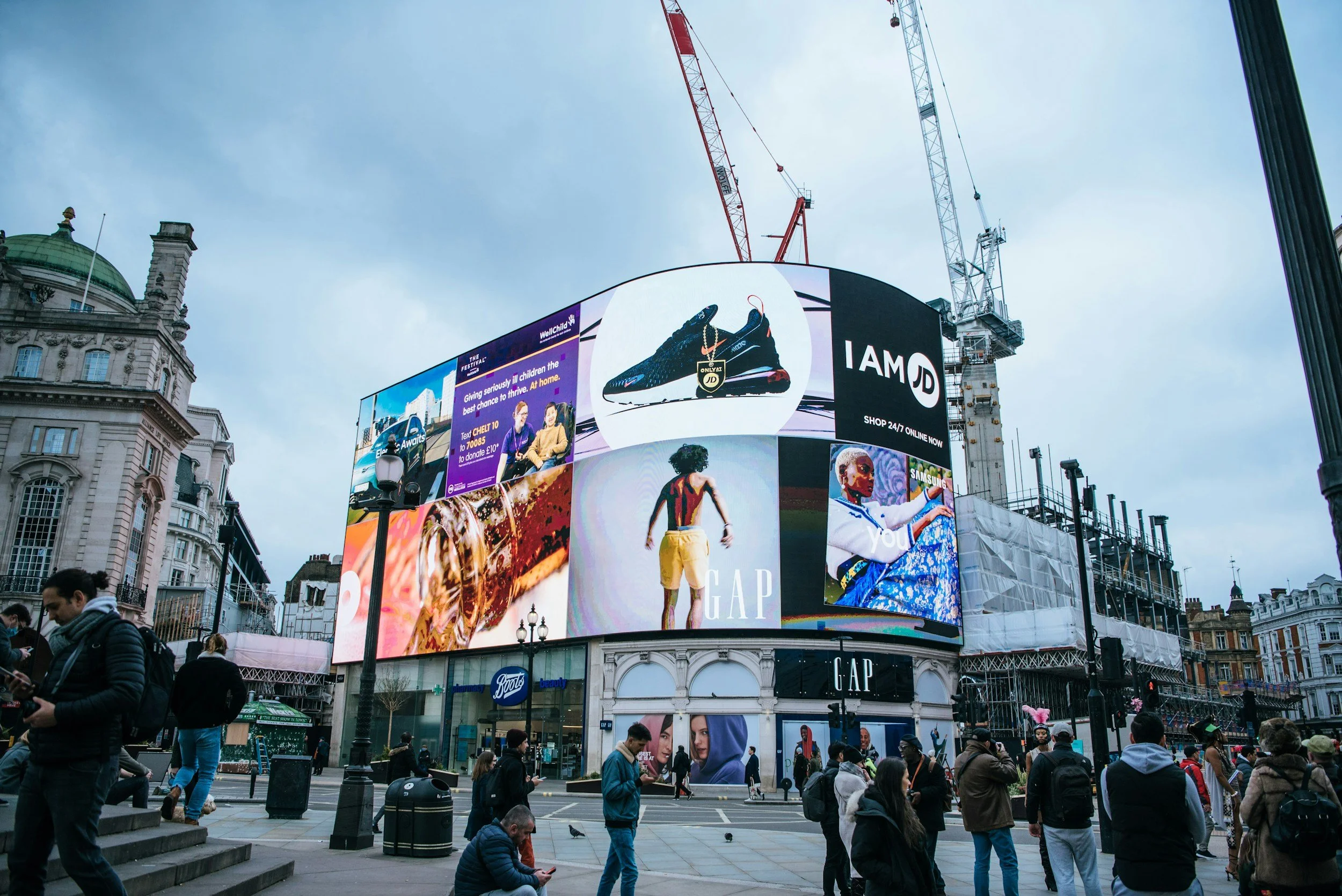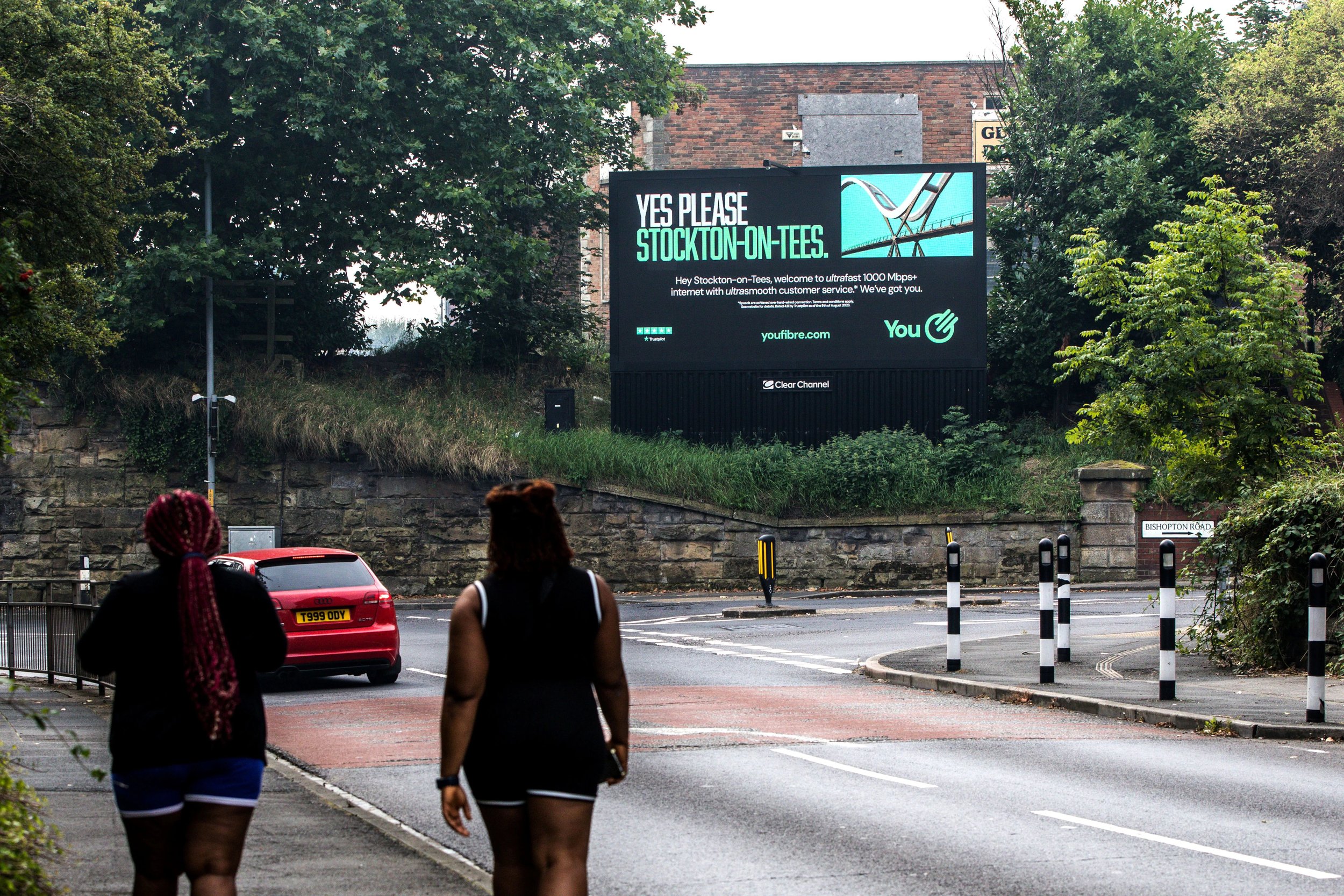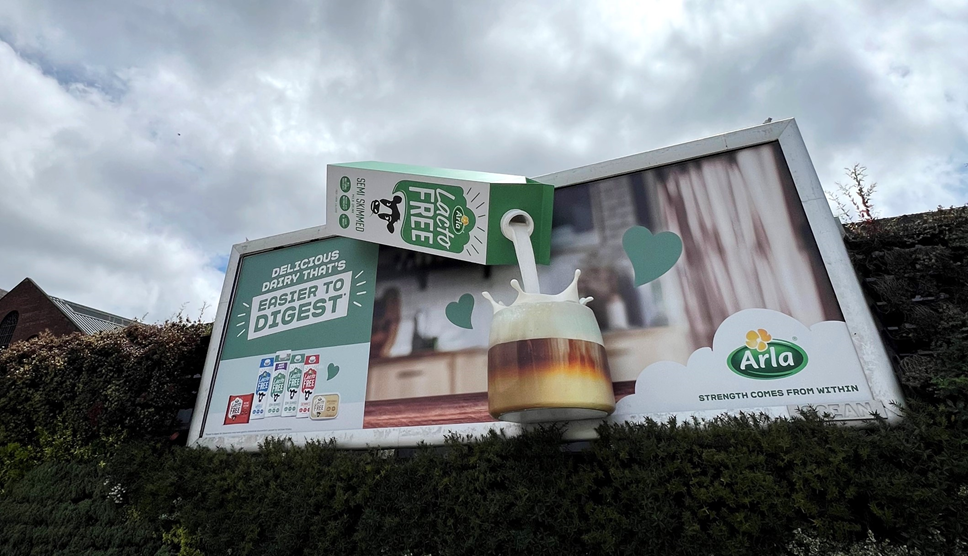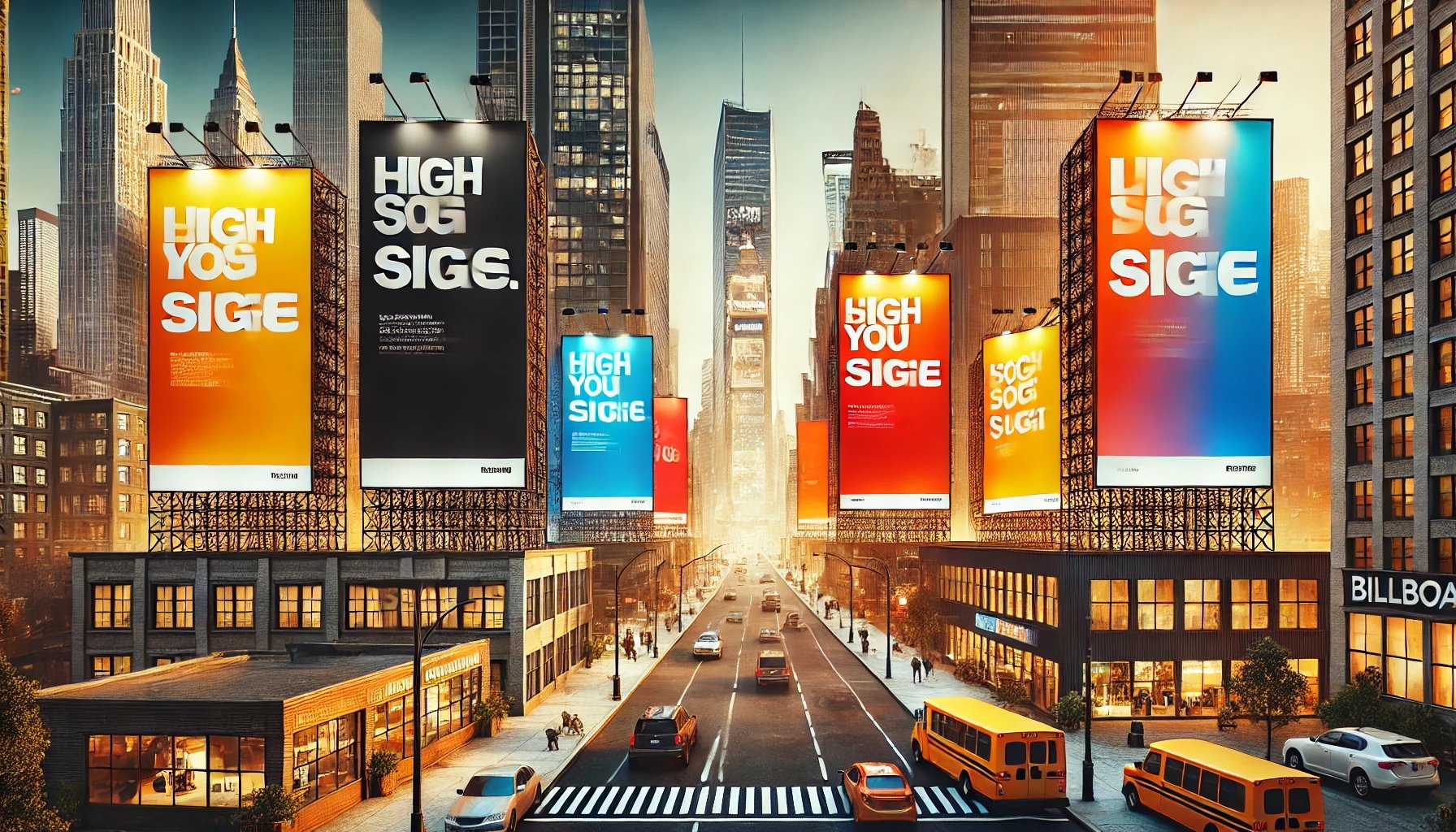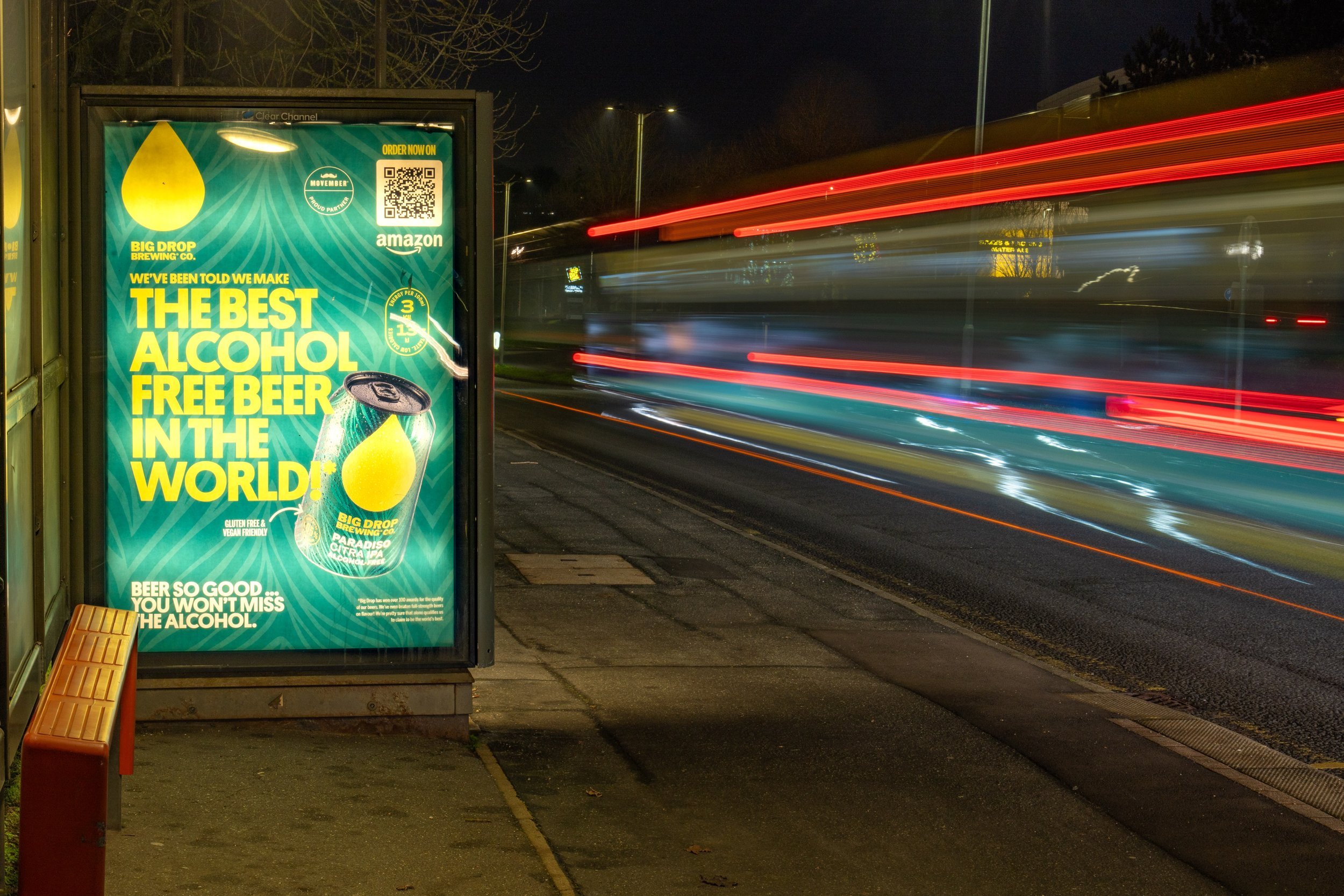How Effective is Billboard Advertising?
One Day Agency Billboard Advertising Campaign for Takis (Grupo Bimbo) in Ireland.
Key Takeaways
Billboards drive mass trust and reach – Over 65% of the UK population see OOH ads, and around 4 in 10 Brits trust billboard advertising compared with only 1 in 10 trusting social media ads.
High impact and always on – Billboards capture attention through scale, prime locations and repeat exposure, with 26% of consumers visiting a brand’s website after seeing an OOH advert.
Future-proof with innovation – 3D, digital and cross-platform campaigns extend billboard impact online, with platforms like TikTok even pushing OOH integrations to blend offline and digital audiences.
Billboard advertising is the use of large-scale digital or print boards to advertise a brand, company, product, service or campaign. Billboards are a part of the out-of-home (OOH) category of advertising and whilst there is expanding excitement around digital advertising, OOH isn’t going anywhere soon with data suggesting that the medium will experience a growth of 5.8% in 2023, with digital out-of-home ads leading the way.
You might be here because you have some concerns about whether it’s worth the risk of using billboard advertising today, but when done correctly, billboards can be a successful part of your overall marketing strategy and work in a variety of ways. While rental costs can be higher than digital advertising costs, they are effective communication tools with many benefits for your business.
In this blog, we take a look at just how effective billboard advertising can be and why it should be an important part of your modern advertising strategy.
How do billboards work?
Billboard advertising is effective for brand awareness. This is because the boards are typically placed in high-traffic areas such as city centres, transport hubs or along pedestrian routes where your message can be broadcast to as many people as possible.
5 Reasons why billboard advertising is effective
1) Billboards capture attention
Their dominating and attractive appearance helps to capture the attention of consumers on their daily journey and repeat exposure solidifies your message. By keeping the message simple, using clear fonts, imagery and colours you can ensure that information is engaging, quickly communicated and easily digestible.
2) You can advertise in different locations.
The success of billboard advertising relies heavily on location. A well-placed billboard has the opportunity to reach a wide variety of people and their biggest advantage is that you can customise the location of your advertisement.
We previously worked with UNiDAYS to strategically place branded billboards on the London underground - a key transport hub that guarantees mass cost-effective exposure. This strategic location alongside other prominent locations such as large roadside and main shopping mall boards helped to solidify the brands’ presence and raise consideration.
3) Billboard ads are cost-effective and efficient.
Billboards offer brands the ability to attract a wide variety of customers using a singular advertising format which can cut costs and time spent researching a niche target audience. Although we recommend a well-balanced cross-platform strategy to diversify impact, billboards allow for broad exposure and an instantaneous impact on their own.
Our approach to media planning not only ensures broad visibility but also saves thousands of hours a year on planning, mapping, emails, WhatsApp data, research and more. Make sure to check out our media planner tool today to streamline your advertising efforts.
4) You can’t switch a billboard off.
TV and radio ads are great for reaching the masses but can be switched off with a click of a button. On the other hand, a billboard is always on. Digital boards use high-res LED, LCD or OLED panels to provide vibrant visuals whereas static boards typically have lights to illuminate the board at night time; this way your message is being delivered 24/7. A customer may be exposed to your ad once or twice through other mediums but billboards provide repeat exposure to those that consistently pass them.
5) Can contribute to increased sales.
When executed strategically, billboards can capitalise on consumer habits. The repetitive nature of seeing a billboard on your daily route means that as customers become more familiar with your brand, they’ll be more likely to purchase from you. Repetition enforces memory and brand recognition so that when your customer heads to the shops, you’re at the top of their mind as a brand they can trust.
Additionally, strategically locating your ad close to points of purchase, including strong call-to-actions in the design and utilising visual storytelling are all powerful ways that can encourage impulsive spending and lead to increased sales.
How effective are Billboards? Well, the statistics don’t lie:
Around 4 in 10 Brits say they trust billboard advertising compared to 1 in 10 trusting social media ads. https://yougov.co.uk/entertainment/articles/34047-trust-in-media-ads-global-poll
In the first quarter of 2023, 45.04 million unique individuals saw large-format OOH ads and 52.38 million saw small-format OOH ads in Great Britain. There are only 67.74 million individuals in the UK resulting in a reach of over 65%. https://www.statista.com/statistics/521453/ooh-reach-format-great-britain/
According to data, an estimated 26% of customers have visited a branded website in direct response to seeing an OOH advert. https://www.marketingcharts.com/television-29833
How can you measure the value of billboard ads?
You can effectively measure the value and cost of an OOH advertising opportunity using the Geopaths OOH rating system which was “designed to provide out-of-home with credible metrics necessary to be comparable to and effectively compete with other measured media.” (2)
The ratings system uses a variety of metrics including circulation, demographics, and impressions to determine the cost of each billboard advertising opportunity. This data is then sold to potential advertisers.
Additional costs with renting a billboard can be: research, design, printing and construction with the scope of work also determining costing totals. At One Day Agency, we prioritise exceptional value. Our approach includes carefully planning campaigns to be the most effective and to accomplish this, we use a mix of exclusive tools, leading behavioural audience insights instead of generic groups, and balance budgets and placements to achieve your goals.
The future of billboard advertising
Once considered outdated, the billboard advertising industry is still growing and as consumers are becoming savvier than ever, brands should think about adopting a more disruptive approach to meet the evolving desires and needs of their customers.
By employing clever billboard design techniques, you can capture attention in unexpected and innovative ways. For instance, 3D billboards allow for a sense of depth and realism in a way we truly haven’t seen before.
With forced perspective, brands can create engaging content that keeps your eyes on the message for longer and because this type of creative is so fresh, it makes it memorable and consumers are more inclined to share what they’ve seen on social media, helping to implant the message in online spaces.
The opportunity to tap into online spaces isn’t just exclusive to 3D billboard ads. There are 14.56 thousand digital billboards dotted about Great Britain (3) with a reach of around 85% of the UK population (4) that allow for dynamic display, interactivity and engaging content ideas. A strategically crafted digital billboard campaign can create enough impact that it gets shared online, dramatically increasing the reach of your brand.
Cross-platform campaigns that incorporate billboards as part of their strategy present a unique opportunity to connect seamlessly with an online audience. If you’re looking to market your brand out-of-home, we offer cross-channel solutions starting from creation to activation. Fill out a contact form today to get started.
Furthermore, platform giant TikTok recently announced the launch of Out of Home, their out-of-home solution that allows partners and brands to leverage TikTok content as out-of-home adverts through real-world screens (5). The introduction emphasises the significance of OOH advertising in modern advertising strategies and it’s an indication of the ecosystem emerging whereby brands can leverage online media such as influencer and user-generated content to deliver authenticity and engage their audience in everyday life.
Conclusion: Yes, Billboards are effective!
There is immense value to be gained from incorporating billboard advertising in modern advertising strategies and despite evolving digital trends, its continued growth highlights its enduring impact. Billboards are effective in capturing attention and building brand awareness with the versatility to incorporate complex design, helping to solidify their place in the future of advertising.
As a highly effective and creative way to promote your product, billboard advertising provides brands with the opportunity to reach huge amounts of people as well as create an unforgettable presence both online and in the real world.
More importantly, they don’t have to be used alone and when used alongside digital, TV & VOD, you can create a compelling advertising strategy that targets a wide variety of people effectively.
FAQs
Is billboard a good marketing strategy?
Billboard advertising is an effective marketing tool as they have wide reach and visibility. However, this depends on a few factors such as target audience, location, messaging, budget and measurability. When used alongside digital marketing, they can be a powerful part of a broader marketing strategy. In 2022, out-of-home advertising spending in the UK grew to 1.18 billion pounds and is predicted to see the growth of roughly 5 per cent in 2023. A clear indicator that it’s a reliable and trusted marketing strategy.
What are the advantages of billboard advertising?
Ability to reach a wide variety of consumers
Provides repetitive and frequent exposure
Affordable and effective
Increases sales
Always on
What are the disadvantages of billboard advertising?
Limited audience targeting
Susceptible to weather and vandalism
Limited time for viewers to absorb messaging
Some billboards are unable to be updated quickly
What is the ROI of billboard advertising?
According to the Out of Home Advertising Association of America (OAAA), billboards have an astounding 497% return on investment. Billboard advertisers see a return of $6 for every $1 they spend on advertising. In the UK, your return on investment will far outweigh the cost of billboard advertising with the average cost starting from around £200 per week for a standard 48-sheet hoarding.
References
If you want to learn more about Billboard Advertising, reach out to us today.


